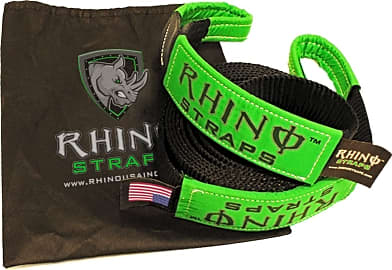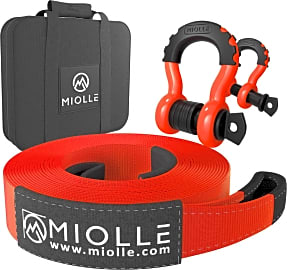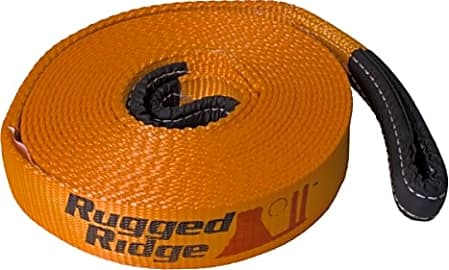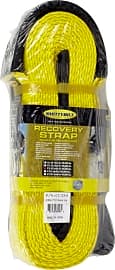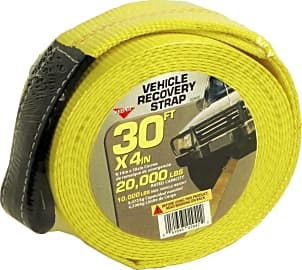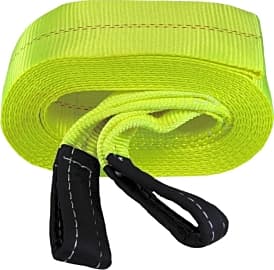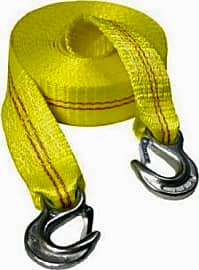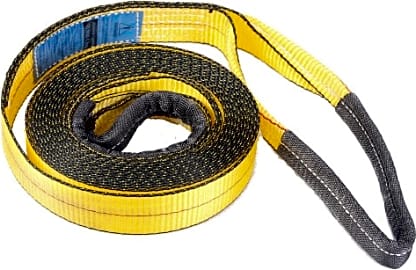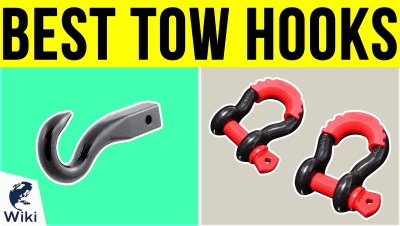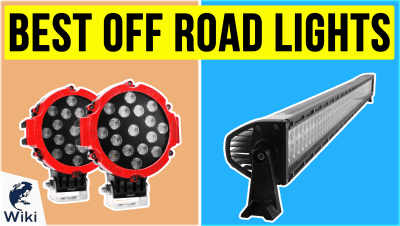The 10 Best Tow Straps

This wiki has been updated 39 times since it was first published in September of 2015. While a tow strap's primary purpose might be pulling broken down vehicles from one place to the next, many of our selections for this category are tough enough to qualify as recovery straps, which are flexible enough to also be used for pulling bogged-down all-terrain vehicles out of the mud, dragging stuck cars out of snow banks, and even yanking stubborn stumps out of the ground. When users buy our independently chosen editorial recommendations, we may earn commissions to help fund the Wiki.
Editor's Notes
May 20, 2021:
We left this list largely intact, believing that the last editor for this page did a good job of balancing heavy-duty choices against a few wallet-friendly selections, making sure that our list had something to offer hardcore off-road enthusiasts, as well as garden-variety consumers who’re just looking for a basic option to buttress their emergency road kits.
One exception was the Presa 21079, which we decided to say goodbye to. In addition to some problems with its availability, we also observed that the Keeper Emergency 02825 was an overall better buy, and so we had no trouble phasing this option out.
In its place, we added the Miolle TS001, a four-inch model that comes with a pair of D-shackles with 3/4-inch screw pins, as well as a zippered storage bag to help keep the whole kit together. As we noted in our description for this item, it sounds like the zipper on this bag isn’t of the best quality, but for most users, with a little luck, you shouldn’t need to pull your tow straps out too often, so hopefully it’ll do the job.
If off-roading is the name of your game, we’ve got a lot of other lists that you might be interested in, including rankings for off-road lights, off-road jacks and ATV winches.
March 23, 2020:
While we did determine that all of our previous selections for this category are still relevant and appropriate rankings for this page, we also added two new selections to the mix: the GearAmerica Ultra Heavy Duty is a bright-orange offering with a beefy four-inch width that boasts 45,000 pounds of tensile strength, and the Motormic Recovery Kit comes with everything you’ll need to pull a vehicle out of the ditch (except, of course, a second vehicle that isn’t in a ditch) – including a forged, locking hitch that’s outfitted with a steel shackle.
A few things to consider for this category:
Material: Nylon and polyester are the two materials that dominate this category. While they’re both suitable for the purpose – in terms of strength, durability and weather resistance – polyester options like the Grip Heavy Duty and Presa 21079 tend to have less elasticity than nylon alternatives like the Rugged Ridge Premium. In practice, polyester models are considered preferable for towing, as things tend be easier for all parties involved when a consistent towing distance can be easily maintained. However, when it comes to yanking a stuck vehicle out of a ditch or snowbank (or a stubborn stump out of the ground), polyester straps are prone to snapping, making stretchier nylon straps (which are sometimes referred to as “recovery straps,” in this context) a better choice.
Length: Whether you want a short strap, or a long strap, or something in between depends entirely on what you intend on using it for. While using a 10-foot strap to pull your friend out of a ditch is a sure way to send him flying into your bumper the moment he breaks loose, using a 40-foot strap to pull a car across town is an awkward and dangerous proposition (which might be prohibited by your local bylaws) that’s sure to yield you a few angry honks, at the very least. So, put some thought into what your plans are for this strap before you order it.
Strength: This is usually explained using one of two metrics:
Breaking strength is also known as tensile strength, and, as the name suggests, it describes how much force needs to be applied to a given strap before it gives out and breaks. So, if you were to hang 11,000 pounds from a strap with 10,000 pounds of breaking strength, it should snap. Breaking strength can be roughly calculated by taking a materials webbing strength (usually expressed in pounds per inch) multiplying it by the width of the strap in question, and multiplying that number by the number of plies a strap has. So, if a two-ply, three-inch strap has 5,000 pounds of webbing strength, it should have a breaking strength of 30,000 pounds, because:
5,000 (webbing strength) x 2 (number of plies) x 3 (width of strap in inches) = 30,000 pounds
It should, however, be noted that straps with multiple plies are considered to be marginally weaker than single-ply options, because their stitching deteriorates their strength. So, if you have two straps with like webbing strength, and one is a single-ply four-inch model while the other is a double-ply two-inch model, you should consider the former to be more durable.
Working Strength is also known as maximum tow(ing) capacity, and it’s typically about half of a given unit’s breaking strength, though several manufacturers seem to report that it’s closer to a third. Ultimately, this is the most important metric for you to look for, as it directly describes the rated capabilities of the strap in question. If it’s 10,000 pounds, then you can pull up to 10,000 pounds. Under no circumstances should you attempt to pull a load that exceeds a strap's working strength.
Special Honors
Bubba Recovery Gear Don't let the friendly looking colors fool you, there's no doubt that this Florida-based company's gear is built mean, offering breaking strengths as high as 66 tons. All options come in a mesh storage bag and with a one-year limited warranty. bubbarope.com
Tactical Recovery Equipment Industrial With a rated breaking strength of 180,000 pounds, you can count on this rope to rip out any stuck vehicle that weighs 50 tons or less. At 14 pounds, it's a lightweight alternative to the chains that truck drivers typically carry, and the whole thing is sheathed in nylon to help improve its durability. tacticalrecoveryequipment.com
Choosing the Right Tow Straps
However, the hooks can scratch and dent a vehicle as they rattle about, while a loop of fabric can't cause appreciable damage at all.
Tow straps are in that unique category of hardware that you are wise to own, yet, ideally, you will never have to use. For, more often than not, a tow strap is only used after an accident, a breakdown, or when a vehicle has gone off the road and become stuck fast in mud, sand, or snow. Fortunately, even the priciest tow straps are still easily affordable, so the investment in preparedness is a sound one. And owning and using your own tow straps will always be much more affordable than calling a tow truck.
When assessing which tow strap will best suit your needs, start first with the most basic consideration: weight rating. If you drive a large pickup truck that weighs in at close to 7,000 pounds at "curb weight," then you should consider a strap rated to work with a vehicle weighing as much as 10,000, as your truck's bed may be laden at the time a tow is needed. If you drive a smaller SUV, Jeep, or a car, chances are your vehicle weighs less than 5,000 pounds, and almost any tow strap will be able to accommodate its size.
Next, consider the proper length of strap for your likely needs. If you force yourself hauling an ATV or jeep up out of a ravine or over a sand dune, you will need a longer strap; many measure thirty feet in length. For merely moving an inoperable vehicle out of a garage and/or down the road, short straps make more sense. If you are unsure which length will suit you best, err on the side of shorter options: they draw taut faster and require less space between vehicles, which is convenient for cross-town towing where space is at a premium.
Most tow straps are bright yellow or are another high-visibility color, such as orange. The more easily-seen the straps are, the safer they are. However, you can also find options in other colors, such as blues and reds, should you prefer.
Finally, you must choose whether you want tow straps with metal hooks attached to their ends, or simply with a fabric loop at the end of the line. Many people claim that the metal hooks actually present more danger than they offer help, as, if the straps snap or a hook becomes disconnected from a vehicle, it can go flying about at great velocity. When properly secured, however, most tow strap hooks with spring-loaded clips that keep the hook in place are perfectly safe.
However, the hooks can scratch and dent a vehicle as they rattle about, while a loop of fabric can't cause appreciable damage at all. If your car has a loop-style hitch mounted on its rear, then an all fabric tow strap is usually the best choice; the strap can be passed over and then threaded through the loop for maximum stability. For cars or trucks to which tow straps might need to be secured in a spot other than a dedicated hitch, metal hooks can help simplify the process.
Note that tow straps are also often used for other purposes, such as for pulling out old tree stumps, fence posts, and more. For these tasks, consider a long, strong strap, as you will be subjecting the straps to lots of pressure, and as the dislodged item might go flying.
Safe and Proper Tow Strap Use
You should be absolutely certain you know how to use a tow strap before you attempt to do so; incorrect use of these items can result in severe damage to a vehicle and might even cause an injury. A good tow strap has much more tensile strength than a vehicle's bumper, for example, which will be readily pulled off of a vehicle if improperly connected. Your car or truck is designed with dedicated anchor points that are suitable for use with tow straps. If you're not sure where they are, consult the manual carefully to find out.
Once you are certain the tow strap has been properly secured to both the stuck, stalled, or otherwise afflicted vehicle and to the automobile providing the tow, slowly allow the towing vehicle to roll forward until the slack in the strap as been pulled taut. Most good tow straps will not stretch in any noticeable way, so once the line has been drawn tight, the towing can commence at once. Make sure the "driver" in the towed vehicle is ready to steer and depress the brakes, as even a slight drop in speed from the forward vehicle can otherwise result in a rear end collision.
Finally, make sure you take the time to thoroughly clean your tow straps after each use, spraying them down with water (and soap if possible) and then drying them fully. Any grease, oil, dirt, or grime left on these straps can damage the fabric fibers over time, ultimately leaving the strap much less robust and capable.
General Safety Towing Tips
As a general rule of thumb, it's never a good idea to try to tow a vehicle that is larger than the car or truck that will be providing the force. It's alright to call a professional tow truck service and save your vehicle from potential damage if you're not confident you have a vehicle that's up the task.
As a general rule of thumb, it's never a good idea to try to tow a vehicle that is larger than the car or truck that will be providing the force.
Whenever you are towing a vehicle, then you need to make sure any other motorists in the area can plainly see what's going on so they don't assume the towed car is operating normally under its own power. Both the towing and towed vehicle should have their hazard flashers on at all times during a tow. It's also a good idea to put flags and or reflectors (they are often triangular in shape) on the back of the towed vehicle.
Make sure the vehicle being towed is in neutral and has its parking brake disengaged. Also check the vehicle's alignment is possible, and commence the tow with its wheels perfectly aligned with the car's or truck's body.
Whenever possible, stick to routes that are flat. Towing a vehicle up a slight grade is acceptable, but unless it absolutely cannot be avoided, it is best to never tow a vehicle down a hill. (And safe downhill towing is of course impossible without someone in the towed car who can steer and apply the brake.)



